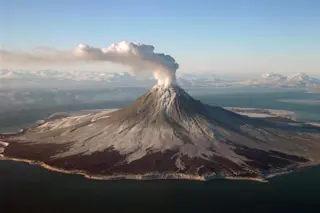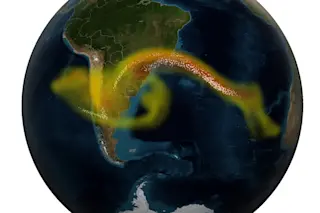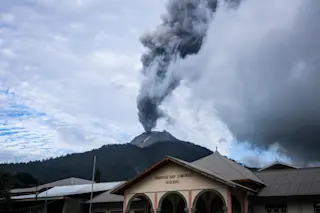We live on a geologically active planet. This, of course, isn’t a shock to anyone but sometimes seeing just now active it is can be fascinating. ESRI put together a dynamic map (below) that captures worldwide volcanic activity over the past 10,000 years in just over 90 seconds. The planet lights up like a Christmas tree with eruptions of all sizes!
When you watch the video, a few things become apparent. Volcanism is concentrated in a lot of places you tend to associate with eruptions: Indonesia, New Guinea, Japan, West Indies, Kamchatka in Russia, Alaska, the Philippines, the Marianas, the Andes (although not the whole length), Central America, New Zealand, Hawai’i and Iceland.
Most of those (other than Hawai’i and Iceland, both of which are above mantle plumes) are places where an oceanic plate is being jammed back into the mantle as it collides with either another oceanic plate (for ...














